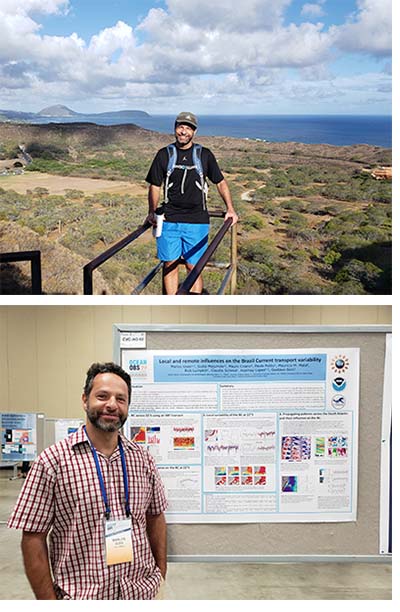
Marlos Goes joined CIMAS and the Physical Oceanography department at AOML in 2010, first as an Assistant Scientist, and in 2020 as an Associate Scientist. His main duties are research in ocean and climate and advising students and post-docs. Marlos has a bachelor's and License in Physics by the University of Campinas, and Masters (2001) and PhD (2006) in Physical Oceanography from the University of Sao Paulo, both in Brazil where Marlos was born. He came to US in 2007 following his passion (literally and figuratively!) as a visitor scholar to the University of Maryland, and later that year he joined the postdoctoral program at the Geophysics department of Penn State.
In his final years as a Physics student, talking about physics and philosophy in a bar with a friend, he came to know there was a branch of physics that applies several of the basic concepts to understand how the oceans move, and how it interacts with the atmosphere, all using cruise ships and satellite observations along with computer programs that simulate the ocean. Although he loved science since he was a kid, he never really thought of oceanography as a carrer, partly because he was born in Brasilia, which is a 1000 miles from the ocean, and because oceanography was in early development in Brazil. However, since he was already an intern in the physical education department studying things like the fluid mechanics of a volleyball serve, and he did not enjoy quantum and solid state physics, oceanography seemed to be a nice alternative. As a note, his friend ended up working for a bank and left science.
Marlos' primary interest is understanding and predicting the large-scale oceanic variability, and assessing its impacts on Earth’s climate. He has worked and published papers on geoengineering, the Atlantic Meridional Overturning Circulation, western boundary and equatorial currents, sea level variability, ocean observing system optimization, improving instrumentation, air-sea interaction, paleoceanography, climate modeling, Bayesian statistics and data analysis.
Published December 14, 2021
» Back to Spotlights




